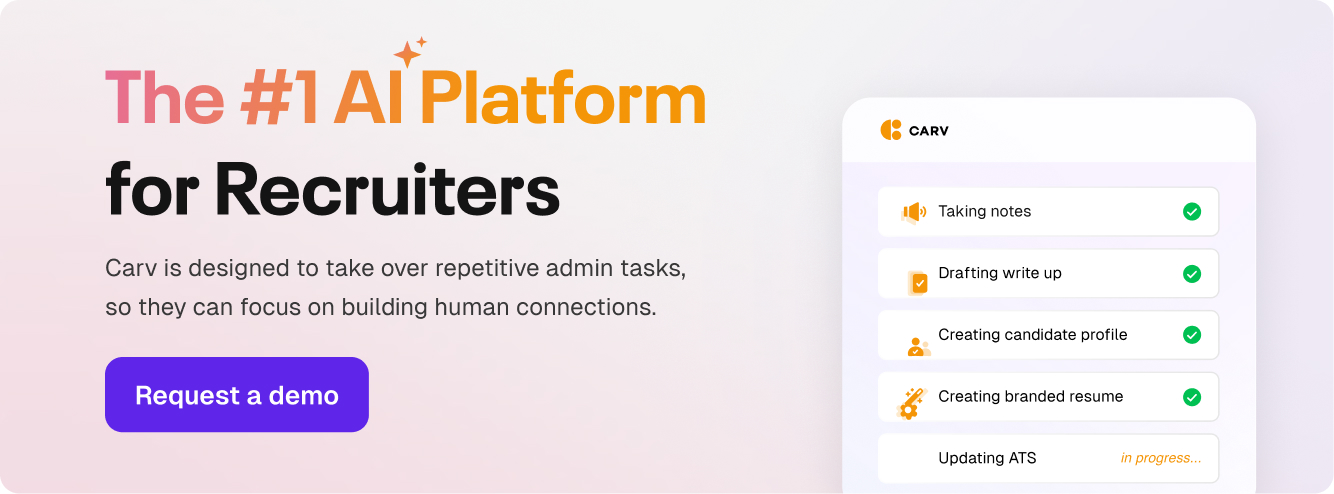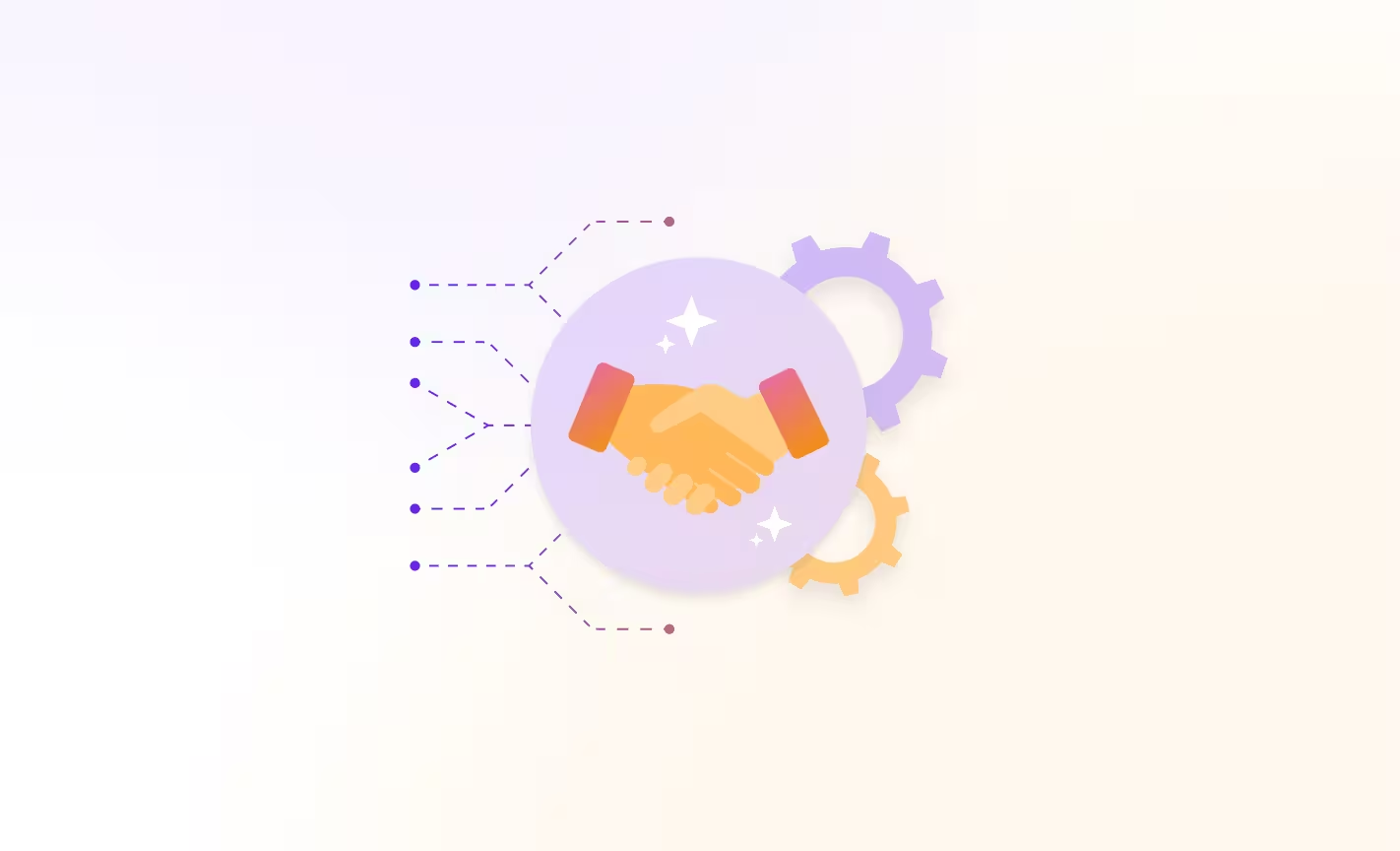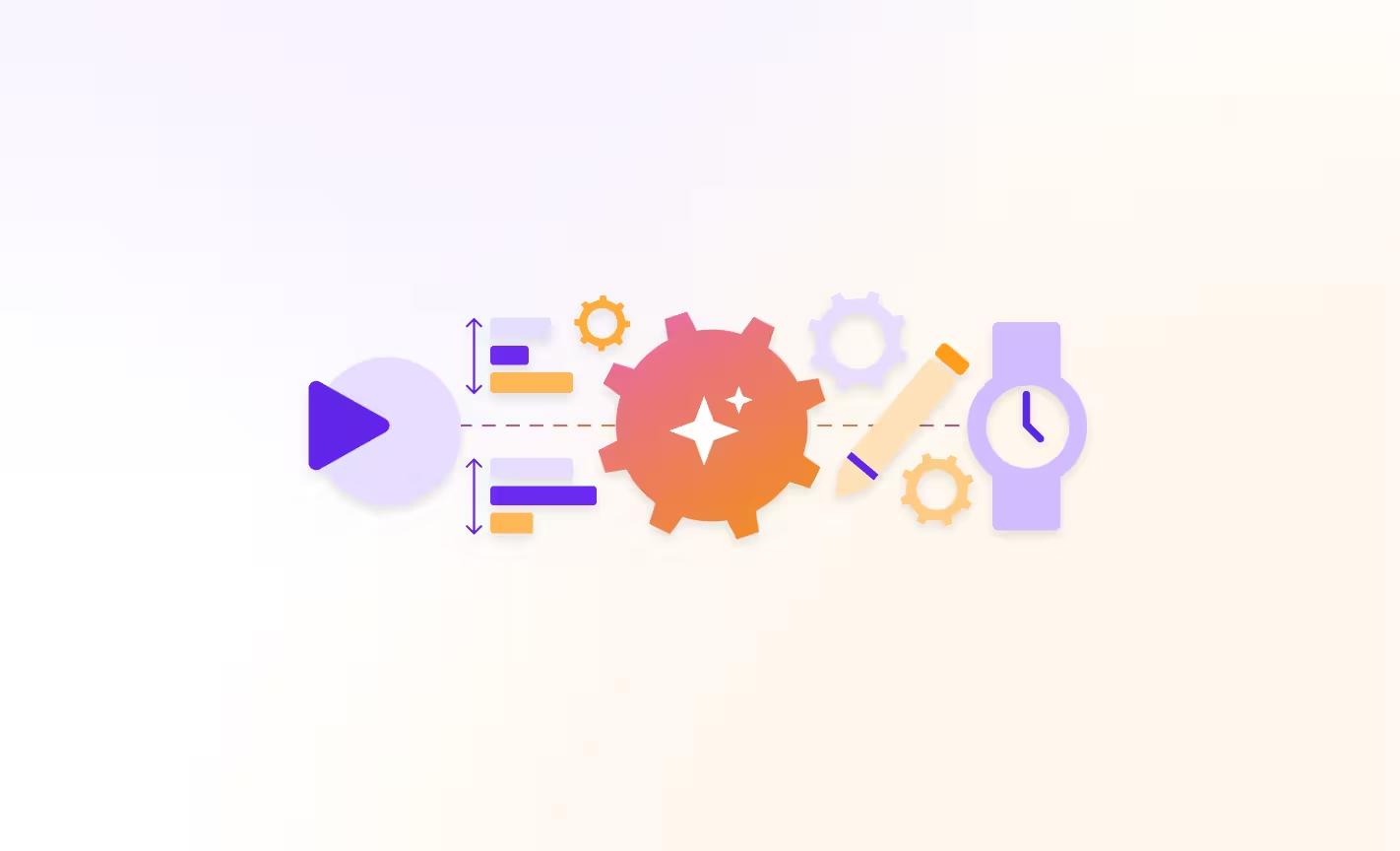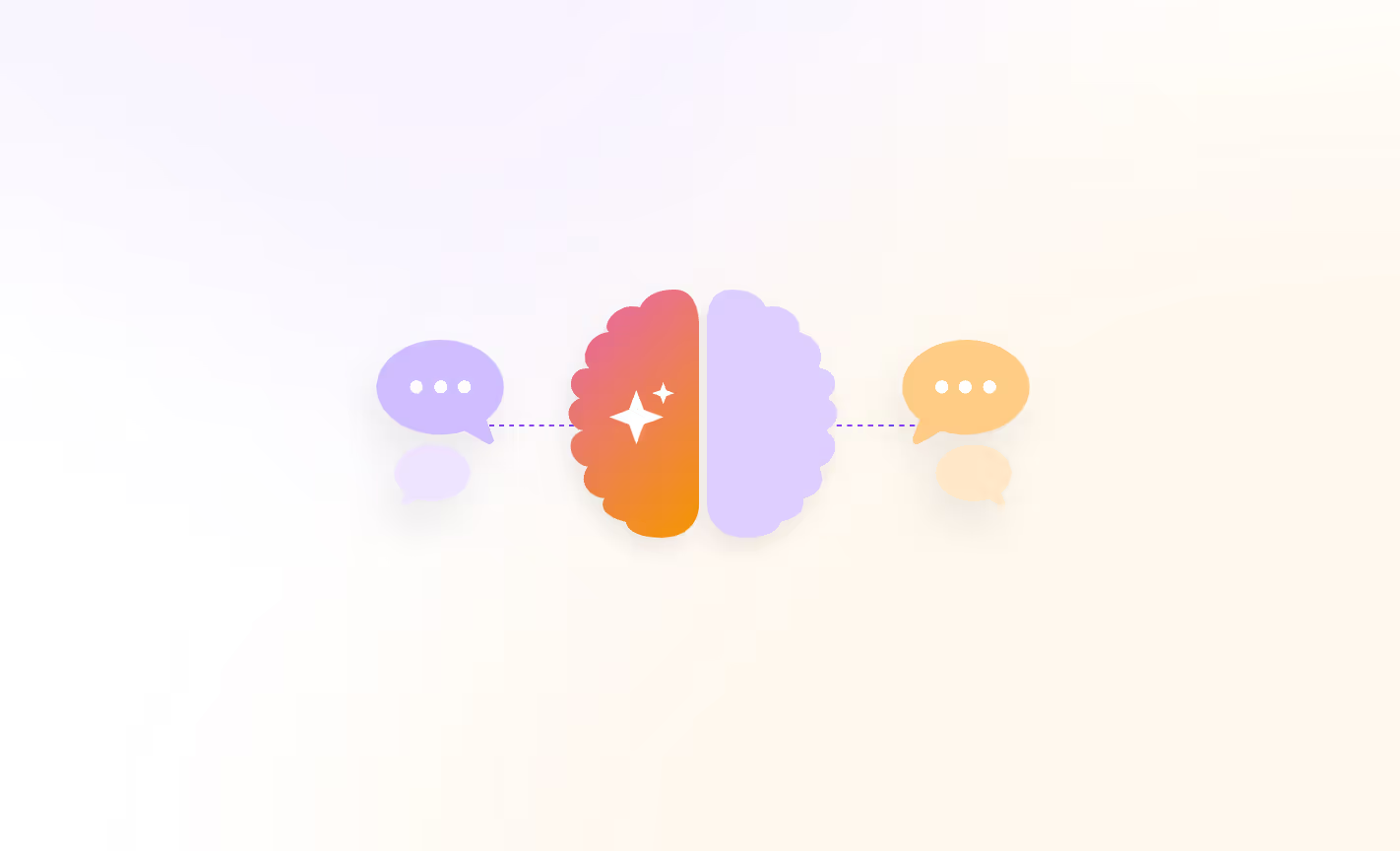Recruitment is a job that many people think is easy. But in reality, you need to be an awesome salesperson, a great marketer, your own admin assistant and a business manager all rolled into one.
And because of this complexity, it’s easy for recruiters to feel overwhelmed and stretched thin. According to one report, as much as 53% of recruiters feel overwhelmed or burnt out on the job.
But the great news is that, nowadays, you don’t have to do it all alone. If you’re willing to embrace recruitment AI assistants as your new workmates, you can delegate repetitive tasks and free up time for more impactful initiatives.
Here are 9 of the most time-consuming tasks in recruitment that you can safely automate to get your time back.
1. Resume screening
Sifting through large pools of resumes to identify quality candidates is a hugely time-consuming process that every recruiter dreads. And to think that before we had applicant tracking systems, recruiters would handle this stage of the hiring process manually!
With general resume screening tools, you can parse and screen candidates fairly quickly, but they do come with limitations. For example, you’re limited by the structure of the data, so the technology can only screen a resume based on what keywords the candidates has used.
AI-powered tools like Carv, on the other hand, can quickly scan resumes not just for specific keywords, skills, and experience, but also for things like transferable skills and contextual information.
Unlike traditional resume parsers, AI-powered software can also work with unstructured data. So if you’ve already had a pre-screening call or interview with a candidate, you can ask the AI to analyze the resume in combination with the recording transcription, and indicate whether the candidate is a good match, based on the full context.
This way, you’re not just scanning resumes, but you’re pre-screening candidates and shortlisting or rejecting them in one go.
This saves the recruiting team a lot of time, and it ensures that only the best candidates who fit the job description are making it through to the next step in the process.
2. Candidate sourcing
Sourcing potential candidates for your open positions is a task that’s got a lot harder in recent years. For one thing, there are just so many platforms to look for candidates, and you need to be proactive about looking in the right places.
And while there are lots of great candidates active on the market right now, many of the top candidates you want to talk to aren’t actively looking for jobs. This means you won’t see them applying to your job adverts on job boards and LinkedIn.
To make sourcing candidates even harder, a lot of the skills employers are hiring for right now are in high demand, or they’re looking for candidates with experience that no one has yet because technology is advancing so rapidly.
This means you need to source differently - focusing on skills and competency rather than credentials, which is no easy feat!
Artificial intelligence has made sourcing - one of the most time-consuming recruitment tasks - something that can be almost entirely automated.
AI-powered sourcing tools automatically search through a variety of databases, social media platforms, and job boards to identify qualified candidates based on your desired criteria — including passive candidates who aren’t on job boards.
Carv, for example, can help you automate your sourcing process, surfacing job seekers and passive candidates that fit your criteria, in real-time.
By integrating Carv with your applicant tracking system or candidate relationship management tool (CRM), you get an AI workmate that will work around the clock, sourcing and screening candidates into your predetermined talent pool or candidate database without you having to lift a finger.
3. Interview scheduling
Interview scheduling is another task that can be really frustrating and a killer of recruiters’ time.
Coordinating schedules between candidates and interviewers always takes more time than it should and often involves a bit of rescheduling — especially when there’s more than one interviewer involved.
Over the last few years, interview scheduling tools have popped up that aim to make the process easier by giving candidates one-click options where they can select an interview slot that suits them - with options for video interviews and face-to-face ones.
But now, artificial intelligence has taken the technology a step further. AI-driven scheduling tools can automatically scan recruiters’ calendars and suggest optimal times for interviews based on candidate and interviewer availability.
That way, no one has to even look at their calendars or think about what time would be convenient - the tool just presents you with the available slots and you choose one. Easy as that!
.avif)
4. Interview note-taking, debriefs, and follow-ups
Unfortunately, interviews don’t get less hectic the longer you’re a recruiter. You need to be able to ask interview questions, take notes and assess the candidate against your job criteria — all while trying to stay engaged to provide a good experience for the interviewee.
But AI-powered note-taking technology has totally transformed the interview process for recruiters.
Tools like Carv can not only transcribe the conversations, but also identify key points and action items, so you can easily plan your follow-up tasks after an interview.
AI can even help with creating interview debriefs and assess candidates against your predefined criteria. And it can do all this because, unlike earlier recruitment technology, AI-powered tools understand unstructured data.
When you delegate note-taking to an AI workmate, it’s sophisticated enough that it doesn’t just scan for keywords in your interview transcription.
It also assesses for things like context, tone, and sentiment. It can pick up on things you might miss during the interview process because you’re so busy multitasking, and remove any unconscious bias when creating candidate debriefs.
Once you start using an AI assistant in this way, you’ll wonder how you ever managed interviews as a manual task in the past.
.avif)
5. Initial candidate screening
If you’ve got a hight number of applicants for a position, you might need to conduct preliminary interviews to assess candidate fit before progressing anyone to interview stage.
This initial stage of screening candidates can be really time-consuming, and generally involves you speaking to a large number of candidates, most of whom will be unsuitable for the role.
This is where AI-powered chatbots and virtual recruitment avatars are becoming a recruiter’s best friend.
Chatbot technology is now at a stage it can conduct initial screening interviews, ask pre-programmed questions and even provide the candidate with basic information about the company before you even speak to the candidate.
And if you’re worried about this sort of recruiting automation being bad for candidate experience, don’t worry. Research has shown that candidates actually enjoy the novelty and gamification of AI-powered candidate screening.
So by the time you’ve got your shortlist of qualified candidates through, they’ve already spent some time getting warmed up by your AI assistant during the screening process. This is why recruitment chatbots aren’t just good for automating time-consuming tasks — they’re great for candidate engagement too.
6. Candidate profiling and write-ups
Next on our list of tasks you can get rid of with the help of recruiting automation software is writing candidate profiles and presentations for the hiring managers.
Especially for agency recruiters, creating detailed candidate write-ups is another manual task that can take up a lot of time and energy — particularly if you’ve progressed a high number of candidates to the interview stage.
Before artificial intelligence technology existed, assessing candidates after interviews was always a manual process that left a lot of room for human error and unconscious bias.
AI technology like Carv ensures candidate profiles are objective and unbiased, even if your tone is generally enthusiastic.
The AI workmate takes your interview transcript and analyzes your candidate data from various sources (e.g. their resume, interviews, or notes from your ATS) and assesses the data against the job description to generate comprehensive profiles.
In addition to these, Carv creates concise write-ups that say clearly how suited the candidate is to your job openings.
This means you can worry less about about making the wrong decisions and instead use the information that’s there in front of you in black and white.

7. Candidate feedback management
Getting feedback from candidates about your hiring process is key to ensuring you’re providing the best candidate experience you can provide.
But as important as we all know this part of the hiring process is, using candidate feedback in any meaningful way is time-consuming. It’s also not always easy to collect feedback in a way that provides clear insights into how hiring teams can improve their talent acquisition process.
Using AI software, you can now analyze large amounts of candidate feedback to identify trends, and any areas for improvement in your recruitment process.
You can also easily assess candidate feedback against your recruitment metrics to see if they hold up. For example, do candidates complain that your hiring process is slow and is this reflected in your time-to-hire metrics?
Using feedback in this way will help you identify where any problems are and any stages of the recruitment process that you need to streamline.
8. Job description generation
You’ve had your intake meeting with the hiring manager, and now have a solid idea of the type of. candidate you need to fill your open position. Now all you have to do is craft an engaging job description that will pull only the most qualified candidates into your application process.
But you’re a recruiter, not a writer, so crafting attractive job descriptions for your adverts is a task that you might dread - especially when you handle a large amount of job requisitions.
Things can get quite repetitive, as your JD always includes the same intro that highlights your employer brand, the same conclusion or call to action, and a similar structure for the actual job requirements.
AI technology is a god-send when it comes to job descriptions. Not only can AI tools magically conjure up a well-written and engaging description of the role, but the result is super accurate too.
Tools like Carv can generate pitch-perfect job descriptions based on various documentation you feed it - including the intake call with the hiring manager, the role requirements, company culture, or industry standards.

9. Offer letter generation
It’s always a nice feeling to let a candidate know that the company would like to hire them. But once you’ve had the pleasure of telling them the great news, you’ve got the paperwork to think about.
Creating personalized offer letters can be a delicate and time-consuming process, as you need to make sure you get the details correct.
Nowadays, AI can entirely automate the process of creating offer letters. The technology does this by pulling relevant information from candidate profiles and company templates for you and presenting it in a perfect letter format.
This leaves almost nothing for you to handle manually - you can just let the automation technology handle the draft for you. All you need to do is to proof the letter for accuracy and send to your candidates for confirmation.
Time to automate your recruitment workflows
By automating these tasks, you can focus on the recruiting tasks that AI can’t take over, like building relationships with candidates, making strategic hiring decisions, and improving the overall candidate experience.
If you’d like to see how Carv can automate the most time-consuming recruiting tasks mentioned in this article, book a demo below.

.avif)

%20(1).avif)




